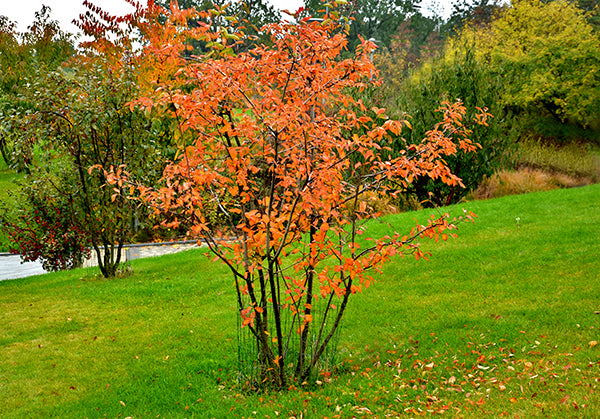Garden trends - multi-stem trees

Planting more trees is invaluable for the environment and helps complete a garden by adding height, shade and an extra layer of beauty and year round interest. Multi-stem trees in particular are increasingly in demand with designers. Created by cutting the trees right back and leaving them to grow multiple stems, they have a natural, architectural shape. One specimen makes a fab focal point in a bed or several create a woodland feel. Here’s our pick:
Betula. Birches are a popular trees to be grown as multi-stems. As well as the white-barked Himalayan birch, B. utilis ‘Jacquemontii’, my favourite is the more pinky-barked B. albosinensis ‘Fascination’.
Amelanchier lamarckii. This is a small tree that works well as a mulit-stem, with its stems and branches making beautiful shapes even in winter. It has gorgeous white blossom in spring and produces fab autumn colour.
Prunus serrula. A pretty cherry, this looks stunning as a multi-stem with its mahogany peeling bark shining in the winter months. It has small white flowers in the spring and good autumn colour.
Malus ‘Evereste’. This is a beautifully shaped small crab apple with excellent spring blossom, good autumn colour, and masses of orange-yellow fruits through the winter. Also look out for multi- stemmed crataegus varieties which have a similar natural feel.
Cercis canadensis 'Forest Pansy'. This tree has a spreading habit and stunning deep purple heart-shaped leaves in summer with bronze foliage in autumn. The bright pink flowers on bare stems in spring are a bonus.
Under planting. Multi-stemmed trees can be quite shady around their base, so plants such as ferns, Ajuga reptans, hellebores, epimedium, brunnera and pulmonaria are good choices, combined with bulbs such as Cyclamen hederifolium, and snowdrops. Naturalistic umbels such as Anthriscus sylvestris look pretty too as do grasses such as Hakonechloa macra, planted en masse.











